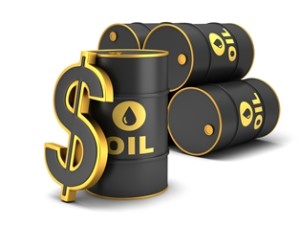
Crude oil prices rose on Tuesday after Libya said loadings of crude at a key port had been suspended.
This recent spike offsets an earlier dent to crude oil prices caused by evidence of the inexorable growth in U.S. oil output.
All loadings at the Libyan oil export port of Zawiya, which exports crude from the 308,000-barrel per day El Sharara field, have stopped due to a strike, a Libyan website said.
Brent crude futures were last up 11 cents on the day at $65.06 a barrel by 1017 GMT, up from an earlier low of $64.67, while U.S. West Texas Intermediate (WTI) crude futures were up 17 cents at $61.53 a barrel.
Both crude benchmarks dropped by around 1 percent on Monday after the U.S. Energy Information Administration said output from the shale basin would hit a new record high in April.
“Libyan oil loadings have been suspended, that’s why the market is rallying at the moment.
“Meanwhile, the EIA confirmed, or possibly made worse, what we already knew about U.S. shale output, which is relentlessly marching higher,” PVM Oil Associates analyst, Tamas Varga said.
U.S. crude production from major shale formations is expected to rise by 131,000 bpd in April from the previous month to a record 6.95 million bpd, the U.S. Energy Information Administration (EIA) said in a monthly report on Monday.
“Oil prices moved lower after (the) Energy Information Administration published a report that crude production from seven major U.S. shale plays is expected to see a climb,” said Stephen Innes, head of trading for Asia/Pacific at futures brokerage OANDA in Singapore.
That expected increase would top the 105,000 bpd climb in March from the previous month, to what was then expected to be a record high of 6.82 million bpd, the EIA said.
U.S. production is expected to rise above 11 million bpd by late 2018, taking the top spot from Russia, according to the International Energy Agency (IEA).
Healthy demand and ongoing supply restraint by a group or producers led by the Organization of the Petroleum Exporting Countries (OPEC) and Russia, however, have so far prevented further price falls.
“The average monthly increase (in shale output) in the eight months since September is 155,000 bpd. This would see shale oil production soar by 1.5 million bpd within a year – enough to cover the total increase in global oil demand,” Commerzbank said in a note.
“Thus OPEC has no scope to expand production from its current level.”
But in a sign that an early-year rally in crude oil may have fizzled out, money managers cut their combined net long positions in the six most important futures and options contracts linked to petroleum prices by 50 million barrels in the week to March 6.
Agency Report
